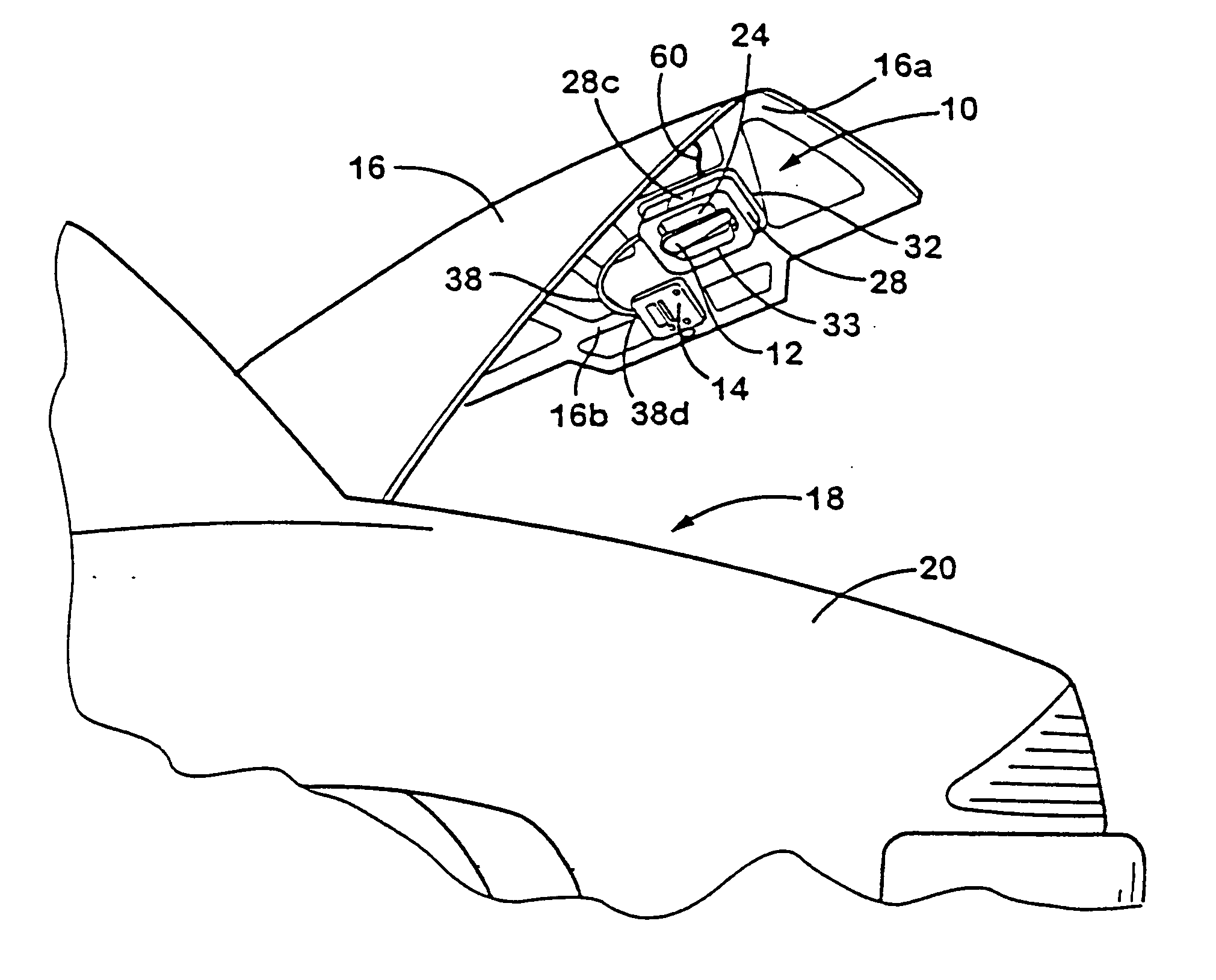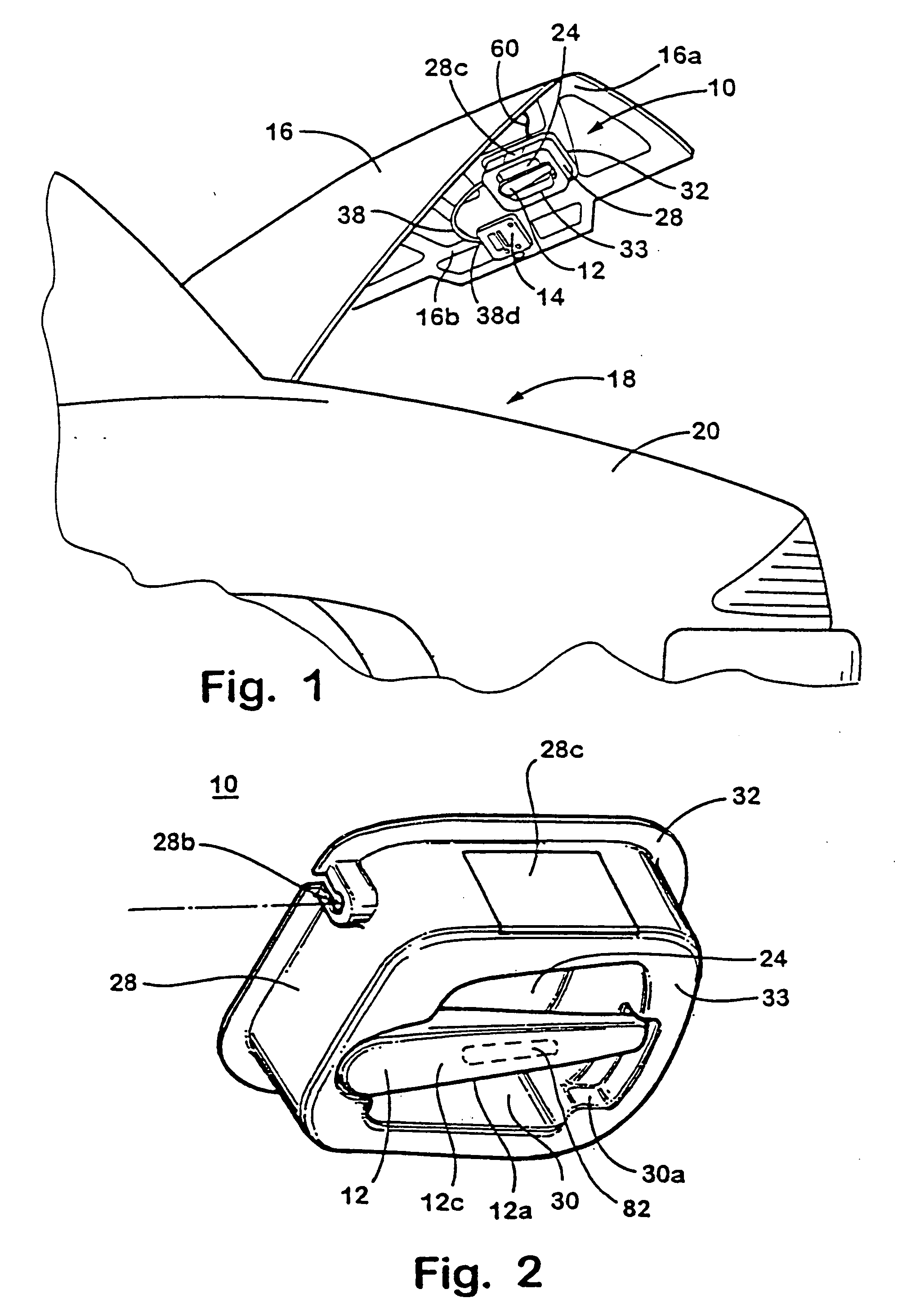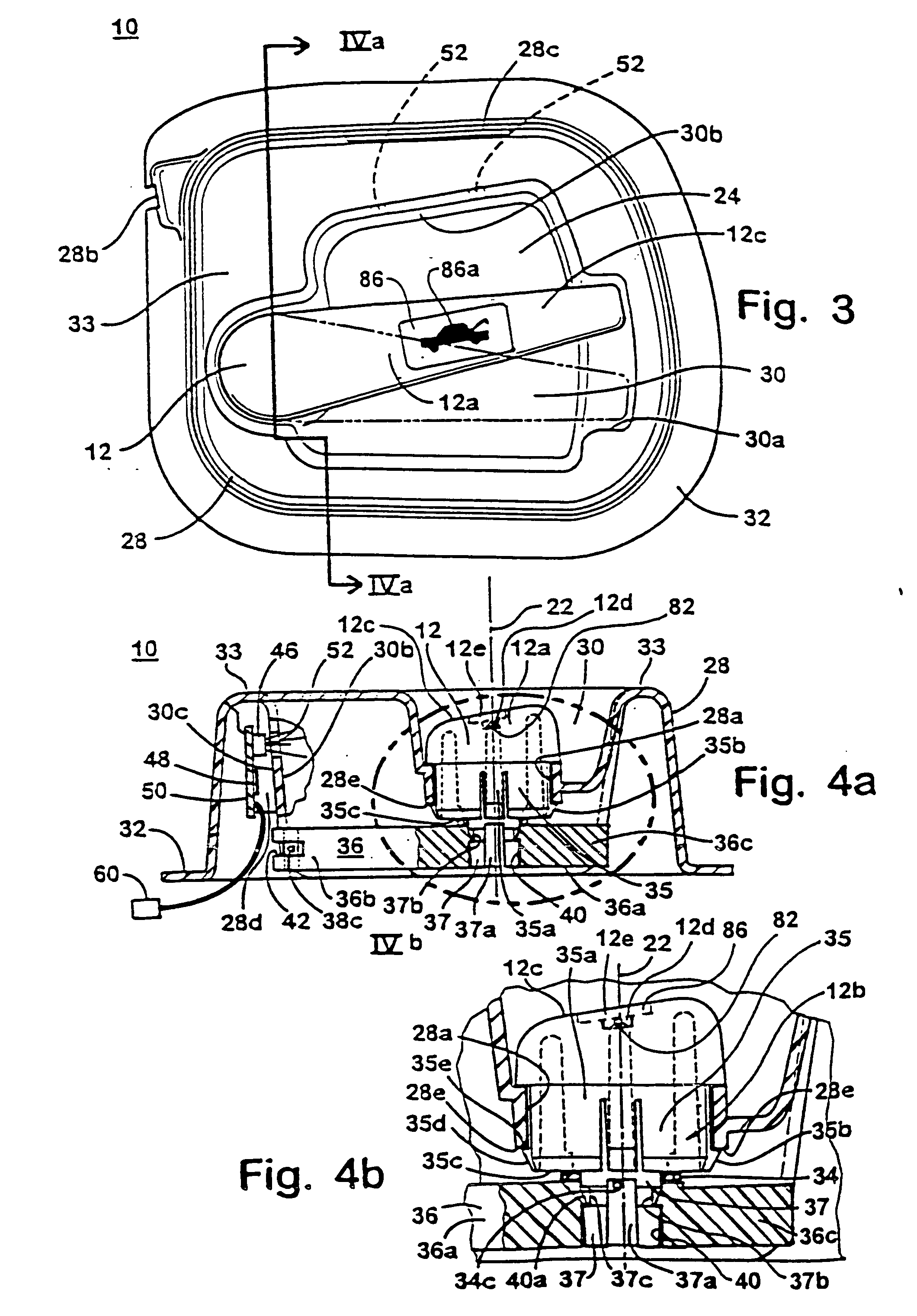Safety system for a closed compartment of a vehicle
a safety system and closed compartment technology, applied in the direction of other compartment lighting, roofs, instruments, etc., can solve the problems of not being able to fold down from within the trunk space, no commercially acceptable mechanism or device has been developed, and no way for a person to open the deck lid and get out of the trunk, etc., to achieve easy activation, not to frighten or confuse a child, and easy to recognize and operable by a child
- Summary
- Abstract
- Description
- Claims
- Application Information
AI Technical Summary
Benefits of technology
Problems solved by technology
Method used
Image
Examples
Embodiment Construction
[0055] Referring now specifically to the drawings and the illustrative embodiments depicted therein, there is shown in FIG. 1 a safety release apparatus or assembly 10, which includes a handle 12 which is interconnected to a release mechanism 14 for opening a deck lid or trunk lid 16 of a trunk compartment 18 of a vehicle 20. The vehicle 20 may be a sedan, coupe or even a hatchback or the like, which includes a storage compartment 18 substantially enclosed by a lid or door 16, such as a trunk or the like. Handle 12 of safety release apparatus 10 is interconnected with release mechanism 14 of deck lid 16 such that release mechanism 14 is activated, and deck lid 16 is subsequently opened, in response to a movement of handle 12. Safety release mechanism 10 is mounted on an interior surface 16a of either the deck lid 16 or elsewhere within trunk space 18, so as to allow an operator of safety apparatus 10 to open the trunk from within trunk space 18. Most preferably, safety mechanism 10 ...
PUM
 Login to View More
Login to View More Abstract
Description
Claims
Application Information
 Login to View More
Login to View More - R&D
- Intellectual Property
- Life Sciences
- Materials
- Tech Scout
- Unparalleled Data Quality
- Higher Quality Content
- 60% Fewer Hallucinations
Browse by: Latest US Patents, China's latest patents, Technical Efficacy Thesaurus, Application Domain, Technology Topic, Popular Technical Reports.
© 2025 PatSnap. All rights reserved.Legal|Privacy policy|Modern Slavery Act Transparency Statement|Sitemap|About US| Contact US: help@patsnap.com



